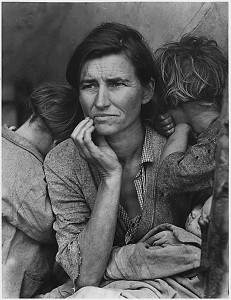 De Angelis, Massimo. 1999. “Marx’s Theory of Primitive Accumulation: A Suggested Reinterpretation.” University of East London. Available online.
De Angelis, Massimo. 1999. “Marx’s Theory of Primitive Accumulation: A Suggested Reinterpretation.” University of East London. Available online.
De Angelis makes a distinction between those that view Marx’s “primitive accumulation” as “historical”—a one-off, big-bang of capitalism—and those that understand the process as a “inherent continuous.” He puts Lenin and scholars involved in the 1970s “transition debates” in the first camp, while he places Rosa Luxemburg and others (e.g. Samir Amin) in the latter camp. De Angelis argues that Marx’s theory shows elements of both tendencies, though not in the way they’ve been characterized in these debates. Such a dual conceptualization, De Angelis says, allow him to show “the nature of [primitive accumulation’s] social character and the variety of forms that in principle it can take” as well as its social meanings.
In explaining Luxemburg’s take, he notes that she does acknowledge its historical (one-off) character, but also describes how she viewed primitive accumulation as a continuous process through the necessary expansion of capitalism. She posits that the polarization between capitalists and eviscerated laborers, requires “third parties” to pick up the consumptive slack (peasants, small producers). But the incompatibility of this necessary articulation between capitalist and non-capitalist systems creates economic resistance from the non-capitalist system, creating the need for violent force to keep the wheels in motion. But De Angelis notes, “As in the case of Lenin, also for Luxemburg resistance and struggle are not constitutive elements of primitive accumulation, but only a possible, albeit important, by-product.
He notes that Marx’s definition implies a double move: turning the means of subsistence into capital and creating a wage-labour, hence Marx’s emphasis of the capital-relation contra Adam Smith’s notion of “stock”—a move that also implies the creation and amassing of two opposed classes. De Angelis encapsulates the process as a three-fold separation:
The first is that the separation of producers and means of production is a common character of both accumulation and primitive accumulation. The second is that this separation is a central category (if not the central category) of Marx’s critique of political economy. The third is that the difference between accumulation and primitive accumulation, not being a substantive one, is a difference in the conditions and forms in which this separation is implemented.
De Angelis notes that for Marx the separation implied in primitive accumulation is also integral to accumulation proper, just “raised to a higher power” and on a “continuous” and “expanded scale” (in Marx’s own words). This separation is instrumental to the reified positioning of labor-power as a thing among things alongside the appearance of value as something independent of living labor itself. But De Angelis also shows the distinctiveness of the separation under the two modes of accumulation even though the two are necessary elements in the being and becoming of capital, its conditions of possibility for reproduction on an expanded scale. For accumulation proper, separation occurs through the dull compulsion of economic relations, while in its primitive guise (not its “phase”) the separation primarily occurs through direct extra-economic force—most obviously, violence. Still, De Angelis acknowledges that primitive accumulation remains a precondition for accumulation proper, though he also notes that it has a continuous character.
“We can say therefore that primitive accumulation for Marx is a social process instigated by some social actor (the state, particular social classes, etc.) aimed at the people who have some form of direct access to the means of production.” The implications of his conclusions on separation means that primitive accumulation should not be exclusively limited to a rupture or transition toward capitalism and, secondly, that the violent separation of primitive accumulation can take various forms. And geographically this means that “accumulation in one place,” say via cotton mills, “may correspond to primitive accumulation in another place,” say Africa via slave trade, “in which the ex novo production of the separation can be the condition of the reproduction of the same separation in another interlinked place.” Other varieties of primitive accumulation identified by Marx include the interrelated forms of public debt, credit, and fiscal/tax structures.
De Angelis highlights that ongoing primitive accumulation, as particular actors engage it, presents a “strategy” and that it can take different forms. He shores up this argument by couching it in terms of Polanyi’s double-movement in which primitive accumulation would be the push-back of particular actors against the protective measures thrown up by society (a triple movement?). Anti-separation thus forms the basis of Marx’s alternative vision for society in which the autonomy and self-determination of producers over social labor is insured by their collective control over the means of production.
Primitive accumulation continually reacts to these efforts of collective resistance, and the extra-economic means it employs are both material and ideological (e.g. classical political economy that Marx derides as the “sycophant of capital”). Nonetheless, De Angelis notes, “Primitive accumulation acquires meaning vis-à-vis patterns of resistance and struggle.”
